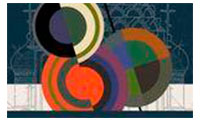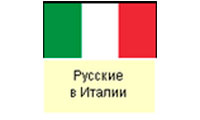The Old Believers of Riga
Arnold Podmazov
Books and Book Culture
The tradition of the Old Believers’ cultural heritage is handed over either directly, through the strict observance of the “rules of piety” in prayer and daily life, or indirectly, via books and book tradition. The Old Believers’ tradition has wholly retained the special attitude to the Word and book that was found in the Medieval Russian culture. The understanding of the Word (Logos) as the incarnation of the divine truth, characteristic for the Christian East, had acquired in Russia the form of a special kind of knowledge, the knowledge of books and derived from books. The knowledge and thorough study of the Gospel and patristic texts signified following the path of knowing the truth.
This explains the special attention to and care for the written word, for ancient books and book collections, which is so characteristic of the Old Believers’ culture.
The book depository of the Riga Grebenshchikov Community has a great cultural and historical value in the context of the traditions of the Old Believers’ faith and Russian book culture in general. The history of this book depository goes back to Feodor Samansky (1696?–1771), the founder of the Riga Old Believers’ almshouse and the church. In the depository there are books from the end of the 17th century and beginning of the 18th century with markings by F. Samansky. The book depository was gradually extended by books from private collections, which were either donated or left as inheritance to the church. For instance, the collections of A. Volovich, M. Vlasov, D. Pershin, I. Dorofeyev, G. Podgursky and others significantly expanded the community’s library in the second half of the 20th century.
The contents of this book depository give evidence both to the thematic range of the Old Believers’ literature, and to the traditions of book design.
In the book depository of Grebenshchikov Community we may distinguish two major types of written artefacts: manuscripts and books of the old printing, published before the reform of the 17th century. The depository contains the first printed book in Russia Apostol (“The Apostle”), published in the 1560s and is the unique copy of this book in the Baltic States. Of special interest are the illuminated manuscripts. For example, the manuscript “Apocalypse” (end of 18th century) contains 77 miniatures, produced in the Pomorian style, most likely by local craftsmen. The Old Believers’ liturgical books, such as the Great Gospel of Riga (16th century) are especially splendid, often in silver or gilded binding.
Since 2003 the Book Depository has a status of the public property in possession of the Riga Grebenshchikov Community: no part of it can be given away or sold to any other proprietor. Even nowadays, this unique book depository, which reflects traditions of the Old Believers’ literary culture both for Riga and the entire Baltic region, continues to be expanded.
Content
- Introduction
- Schism and “Old Belief”
- Beginnings of the Old Believers on the territory of Latvia
- Confessional Characteristics of Old Believers in Latvia
- Old Believers’ Church Building and Liturgy
- Books and Book Culture
- Iconographic Traditions of Riga Old Believers
- Pomorian Old Believer Traditions of the Art of Copper Casting
- Old Believer Churches in Riga
- Old Believer Societies in Riga
- Old Russian Residents of Riga and Old Believers in the 18th century
- The Years of Prosperity and the Years of Misery: Riga’s Old Believers in the 19th Century
- Riga Old Believers at the Turn of 19th and 20th Centuries
- Riga Old Believers in the Independent Latvia (1918–1940)
- Riga Old Believers During the Soviet Period (1940–1941, 1944–1991)
- Riga Old Believers after the Restoration of Latvia’s Independence
- Photogallery
- About the Project. The Old Believers of Riga: 250 Years of Cultural Historical Experience







